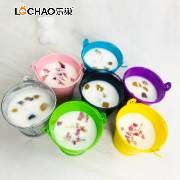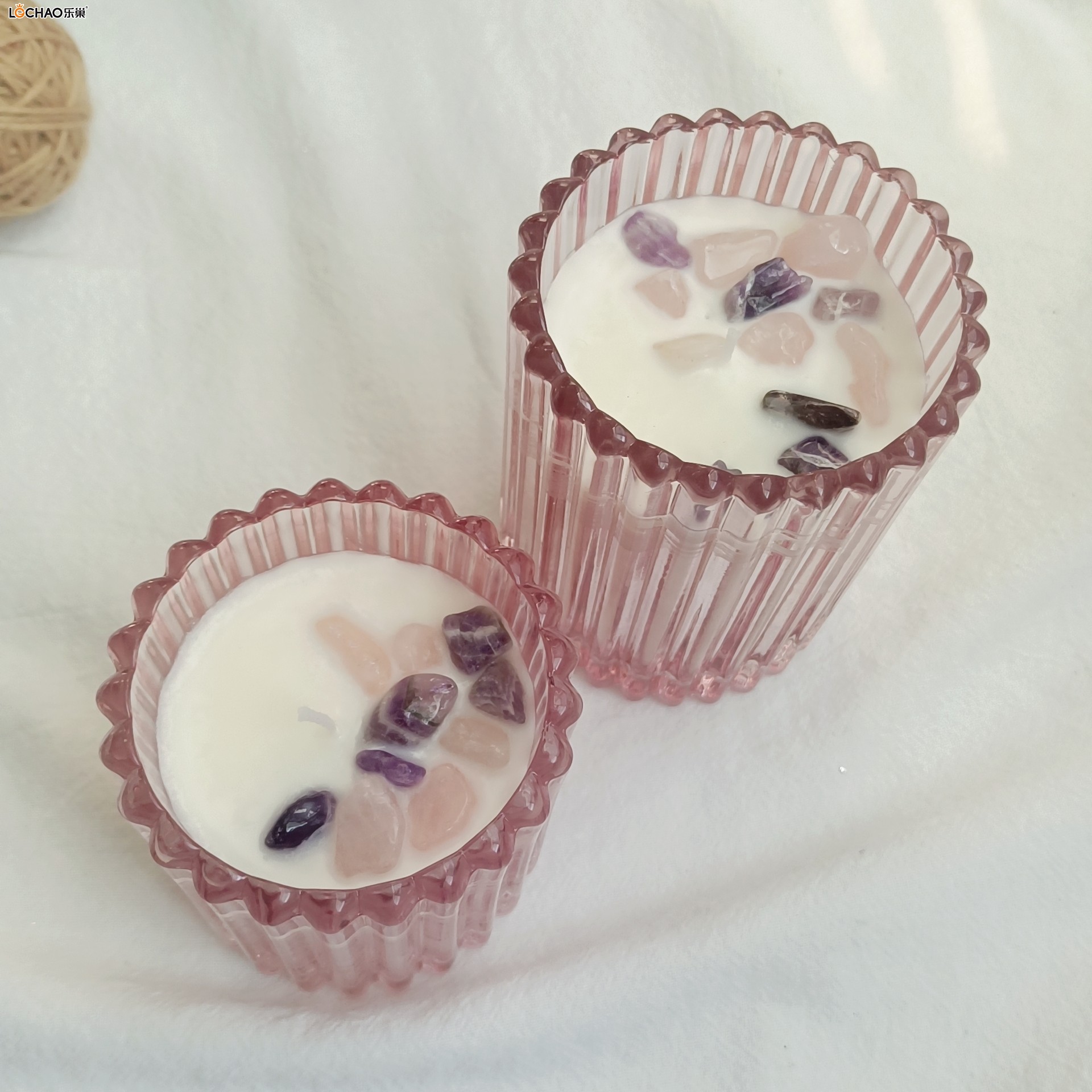With the improvement of living standards, scented candles are no longer just simple lighting tools, but have become "life companions" that create a homey atmosphere and soothe emotions. However, faced with a wide variety of products on the market, how to choose scented candles that are safe, pleasant-smelling and suitable for your needs? This article sorts out the key purchasing points to help you avoid pitfalls and accurately find the right one.
I. Core Materials Are Fundamental: Wax and Wick Determine Safety and Experience
The first step in choosing a scented candle is to focus on the two core materials: "wax" and "wick", which directly affect burning safety, fragrance release effect and service life.
1. Wax: Prioritize Natural Ingredients, Reject Low-Quality Paraffin
Currently, mainstream waxes on the market are divided into two categories: natural waxes and synthetic waxes. Natural waxes such as soy wax, beeswax, and coconut wax have the advantages of low melting point, full combustion, and low smoke. They are also environmentally friendly and biodegradable. Even if accidentally dripped on fabrics, they are easy to clean, making them especially suitable for long-term home use. Among them, soy wax is soft and has good fragrance retention; beeswax has a natural beeswax aroma and can release negative ions when burned to purify the air; coconut wax has a lower melting point and burns more evenly, often mixed with soy wax to improve stability.
What needs to be vigilant is low-quality paraffin wax at low prices. This kind of synthetic wax may release harmful substances such as benzene and formaldehyde when burned, and produces a lot of smoke and black candle tears. It not only affects indoor air quality, but may also adhere to walls or furniture. When purchasing, you can confirm the type of wax by checking the product ingredient list. Natural wax products usually clearly mark information such as "100% Soy Wax" and "Coconut Wax Base".
2. Wick: Cotton Wick Is Optimal, Pay Attention to Thickness Matching
The material and thickness of the wick directly affect burning stability. Pure cotton wicks burn with a stable flame and low smoke, making them the best choice; some products add wooden cores to cotton wicks, which can make a slight "crackling" sound when burning to enhance the atmosphere. However, it is necessary to choose products with tight wood and no burrs to avoid debris during burning.
At the same time, the thickness of the wick needs to match the candle size: small-capacity candles (below 50g) are suitable for thin wicks, and large-capacity candles (above 200g) need to be paired with thick wicks. If the wick is too thin, it is easy to cause the "tunneling effect" (the middle is burned out while the outer wax does not melt); if it is too thick, the flame will be too large and smoke will increase. When purchasing, you can check whether the wick is centered; a skewed wick may lead to uneven burning.
II. Fragrance Selection Requires Care: From Scent Notes to Personal Adaptation
The core charm of scented candles lies in their fragrance. Different scents are suitable for different scenarios and moods. Blindly following trends can easily lead to disappointment, so it is necessary to choose rationally according to personal needs.
1. Choose by Scent Note Layers: Top, Middle and Base Notes Work Together for Longevity
High-quality scented candles have "top, middle and base" note changes. After being lit, the fragrance is gradually released over burning time, with rich layers. The top notes (10-15 minutes after lighting) are usually fresh fruity or herbal scents, such as lemon, bergamot, and mint, which can quickly awaken the senses; the middle notes (30 minutes after burning) are mostly floral or woody scents, such as rose, lavender, and cedar, which are the core of the fragrance; the base notes (1 hour or more after burning) are mellow scents like amber, musk, and vanilla, which have long-lasting staying power and create a calm atmosphere.
When purchasing, prioritize products marked "3-Notes Fragrance" and avoid cheap candles with only a single pungent scent. If possible, it is recommended to test the scent on-site: wait 15-20 minutes after lighting to feel whether the fragrance transitions naturally and whether there is a pungent chemical smell.
2. Choose by Scenarios and Needs: Precisely Match Lifestyle Scenes
Sleep Aid Scenario: Prioritize soothing scents such as lavender, chamomile, cedar, and sandalwood. These scents can lower heart rate and relieve anxiety. Avoid overly refreshing scents like citrus and mint.
Work/Study Scenario: Fresh scents such as lemon, bergamot, and rosemary are recommended, as they can improve concentration and dispel drowsiness.
III. Details Reflect Quality: Containers, Capacity and Brands Should Not Be Ignored
In addition to core materials and fragrance, the candle's container design, capacity specifications, and brand qualifications are also important basis for judging product quality.
1. Container: Balance Practicality and Aesthetics
The container of a scented candle not only affects its appearance but also relates to usage safety. For glass containers, choose thick, heat-resistant borosilicate glass to avoid cracking due to high temperature during burning; for metal containers, check whether the inner wall is smooth to prevent wax from sticking and being difficult to clean. In addition, priority can be given to containers with lids, which can prevent dust from entering, seal the fragrance, and extend the service life. The containers of many high-quality brands can be reused as storage jars or small flower pots after the candle is burned out, combining practicality and environmental protection.
2. Capacity: Choose According to Needs to Avoid Waste
Scented candle capacities are usually divided into three specifications: small (50-100g, burning time 20-30 hours), medium (150-250g, burning time 40-60 hours), and large (above 300g, burning time 80+ hours). For first-time tries or travel, small-capacity candles are recommended; for long-term home use, medium and large capacities offer better cost performance. It should be noted that candles need to be burned for "2-3 hours for the first use" to ensure even melting of the wax surface. Therefore, small-capacity candles are more suitable for short-term use, while large-capacity ones are ideal for creating atmosphere for a long time.
3. Brand: Prioritize Regular Brands with Qualifications
The quality of scented candles on the market varies greatly, and some unbranded products have problems such as low-quality wax and excessive fragrance agents. When purchasing, you can prioritize regular products with clear brand qualifications and transparent ingredients, such as international brands like Diptyque and Jo Malone, and domestic brands like Guanxia (Guansha) and Beast (The Beast). These brands usually undergo strict safety testing and have more professional fragrance research and development. At the same time, check whether the product is marked with "burning time", "usage instructions" and production qualifications, and avoid purchasing "white-label products" with no identification.
IV. Pitfall Avoidance Guide: Steer Clear of These Misconceptions
Misconception 1: The Stronger the Fragrance, the Better Overly strong fragrances may contain excessive fragrance agents. Long-term inhalation can easily cause dizziness, allergies and other discomforts. High-quality scented candles should have a "light but long-lasting, natural and fresh" fragrance.
Misconception 2: Pursue Low Prices and Ignore Materials Small-capacity candles under 20 yuan are mostly made of paraffin and low-quality fragrance agents, which not only have a poor experience but also pose safety risks. It is recommended to set a minimum budget of 50 yuan or more.
Misconception 3: Ignore Post-Burning Maintenance After extinguishing the candle, trim the wick in time (keep 5-8mm) to avoid excessive flame during the next burning; if the "tunneling effect" occurs, wrap the upper part of the candle with tin foil while burning to promote even melting of the wax.
Choosing a scented candle is a combination of "material safety" and "sensory experience". There is no need to blindly pursue high prices. As long as you master the core points of "checking materials, smelling notes, and examining details", you can select a product that enhances the quality of life and meets your own needs. Why not use this guide to choose an exclusive scented candle for your home, and enjoy a moment of tranquility amid the flickering candlelight and gentle fragrance.





